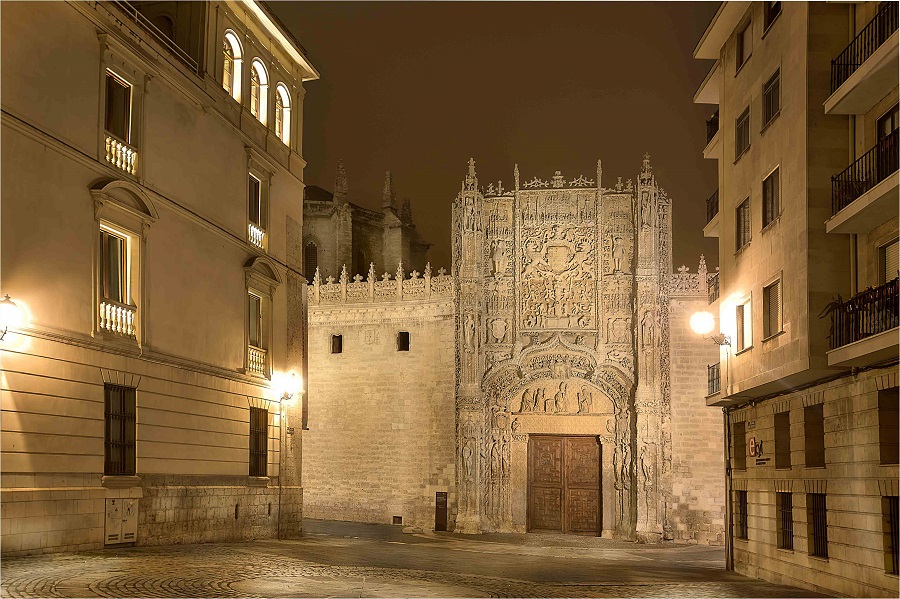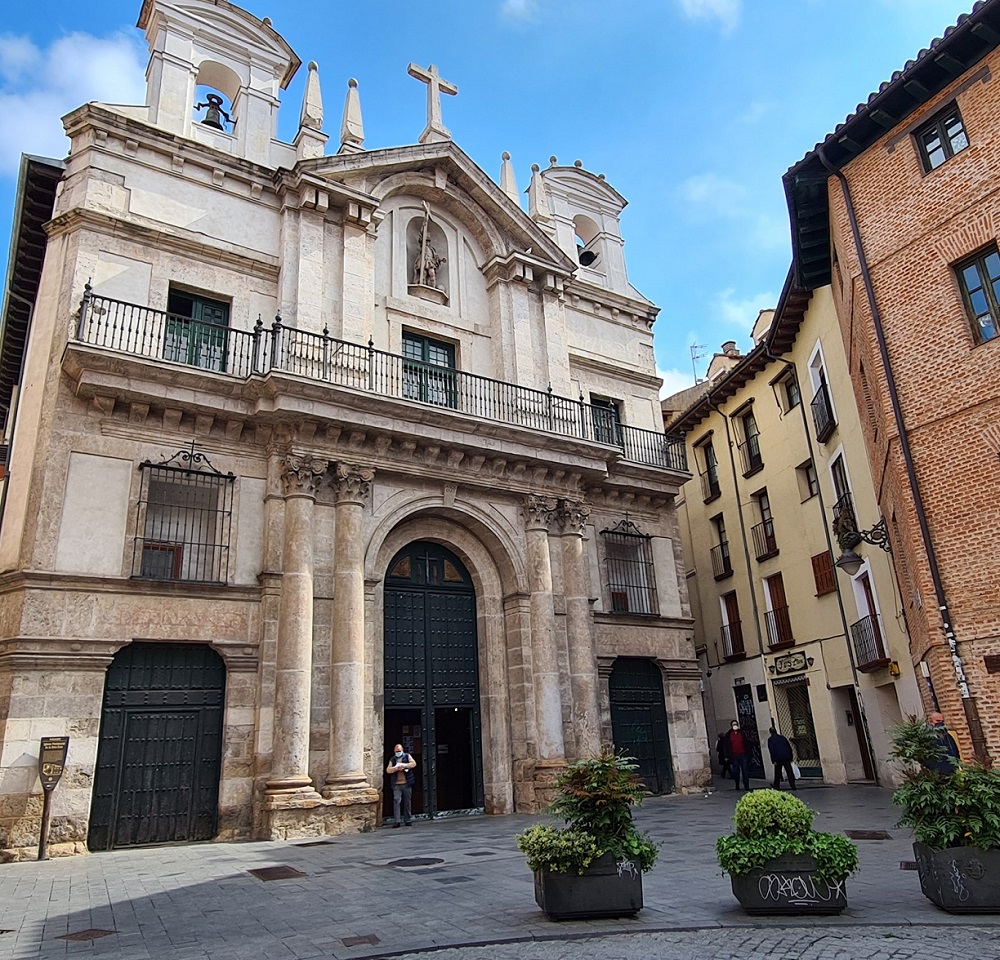Lugares - monumentos - Iglesia Vera Cruz
Breadcrumb
Breadcrumbs
Asset Publisher
Seminary School of Saint Gregory

Discover its enigmatic façade
It is an architectural work from the end of the 15th Century, under the guidance of Fray Alonso de Burgos, confessor of the Catholic Monarchs and Bishop of Palencia.
Its monumental façade replete with decorative and sculptured elements attributed to Gil de Silóe is worth noting. With Fray Alonso before the Pope in the tympanum and St. Dominic and St. Paul at the sides.
The buttresses are decorated with warriors. There are also angels with the armorial bearings of the founder. In the centre piece there is a pomegranate tree sheltering the arms of the Catholic Monarchs with a pomegranate in the top representing their conquer (so it is dated after 1492).
The design of the chapel, where the bishop is buried, is attributed to the architects Juan Guas and Juan de Talavera, starting in 1484. In 1499 a sacristy by Simón de Colonia was attached to it. Now it is state property and houses since 1933 the National Scultpture Museum.
Navigation Menu
Asset Publisher
Calle Rúa Oscura, 8
Asset Publisher
LOCATION
Widget tiempo Valladolid
Media Gallery
Valladolid seen through the eyes of its inhabitants and tourists
Asset Publisher
Church of the 'Vera Cruz'

Sede de la cofradía más antigua de la ciudad
It is the headquarters of the oldest penitential brotherhood of Holy Week in Valladolid, originally associated with the care of contagious patients. The members of the brotherhood commissioned the construction to Pedro de Mazuecos in 1581, who was obliged to respect and preserve the arch that existed at the end of Platerías Street on the façade.
Its current appearance is not its original one, as the church has undergone interventions such as the addition of a balcony to the façade by the prestigious Diego de Praves around 1595, as well as a nave expansion in the 17th century.
The Church of La Vera Cruz came close to disappearing on several occasions: in 1806, due to a fire; in 1936, when the City Council approved a project for Gran Vía that was never carried out; and in 1938, due to a new urban project that proposed its demolition. Fortunately, none of these plans were executed, as the view it offers from the entrance of Platerías Street creates a picturesque scene worthy of being photographed.
It houses a valuable collection of altarpieces and wooden sculptures, including those created by Gregorio Fernández, as well as a 16th-century wooden and papier-mâché float depicting "La Borriquilla." Its most emblematic symbol is the Cross of May, which carries a relic of the True Cross, and is paraded every 3rd of May.
